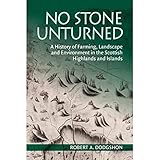No Stone Unturned : A History of Farming, Landscape and Environment in the Scottish Highlands and Islands / Robert Dodgshon.
Material type: TextPublisher: Edinburgh : Edinburgh University Press, [2022]Copyright date: ©2015Description: 1 online resource (304 p.) : 12 B/W illustrations 32 B/W line artContent type:
TextPublisher: Edinburgh : Edinburgh University Press, [2022]Copyright date: ©2015Description: 1 online resource (304 p.) : 12 B/W illustrations 32 B/W line artContent type: - 9781474400749
- 9781474400756
- 630.9 23
- S460.H64 D63 2015
- online - DeGruyter
- Issued also in print.
| Item type | Current library | Call number | URL | Status | Notes | Barcode | |
|---|---|---|---|---|---|---|---|
 eBook
eBook
|
Biblioteca "Angelicum" Pont. Univ. S.Tommaso d'Aquino Nuvola online | online - DeGruyter (Browse shelf(Opens below)) | Online access | Not for loan (Accesso limitato) | Accesso per gli utenti autorizzati / Access for authorized users | (dgr)9781474400756 |
Browsing Biblioteca "Angelicum" Pont. Univ. S.Tommaso d'Aquino shelves, Shelving location: Nuvola online Close shelf browser (Hides shelf browser)

|

|

|

|

|

|

|
||
| online - DeGruyter The Edinburgh Companion to the Short Story in English / | online - DeGruyter Philosophies of Exclusion : Liberal Political Theory and Immigration / | online - DeGruyter Regicide and Republicanism : Politics and Ethics in the English Revolution, 1646-1659 / | online - DeGruyter No Stone Unturned : A History of Farming, Landscape and Environment in the Scottish Highlands and Islands / | online - DeGruyter Levinas, Ethics and Law / | online - DeGruyter The Languages of Business : An International Perspective / | online - DeGruyter Sasanian Persia : Between Rome and the Steppes of Eurasia / |
Frontmatter -- Contents -- Acknowledgements -- Figures -- Abbreviations -- CHAPTER 1 Writing the History of Highland Farming, Landscape and Environment -- CHAPTER 2 The Prehistoric Footprint -- CHAPTER 3 Prehistory into History -- CHAPTER 4 the Late Medieval and Early Modern Landscape: Stasis or Change? -- CHAPTER 5 On the Eve of the Change: A Look through the Surveyor's -- CHAPTER 6 The Highland Toun through Time: AN INTERPRETATION -- CHAPTER 7 Landscapes of Change, 1750-c.1815: The Broadening Estate -- CHAPTER 8 Landscapes of Sheep, Deer and Crofts: Change after c.1815 -- CHAPTER 9 The Years of Change: An Overview -- Select Bibliography -- Index
restricted access online access with authorization star
http://purl.org/coar/access_right/c_16ec
A one-stop text for the long-term history of the Highland countryside, one nuanced in ways that address topical themes like landscape and environmental change.Starting with prehistory, the book examines the way in which the farming community was organised: its institutional basis, its strategies of resource use and how these impacted on landscape, and the way in which it interacted with the challenges of its environment. It carries these themes forward through the medieval and early modern periods, rounding off the discussion with a substantive review of the gradual spread of commercial sheep farming and the emergence of the crofting townships over the eighteenth and nineteenth centuries. Throughout, it draws out what changed and what was carried forward from each period so that we have a better understanding of the region's dynamic history, as opposed to the ahistorical views that inevitably flow from a stress on cultural inertia.Key Features: Synthesises a great deal of work on the Highland farming community during the medieval and early modern periods in terms of its institutional organisation, resource exploitation, landscape impacts and interactions with environment so as to produce an overall review from prehistory down to 1914. Introduces new ideas and arguments that have not been treated or previewed in other published work. Provides the most substantive review of the continuity/discontinuity debate in the Highland landscape currently available.
Issued also in print.
Mode of access: Internet via World Wide Web.
In English.
Description based on online resource; title from PDF title page (publisher's Web site, viewed 24. Mai 2022)


